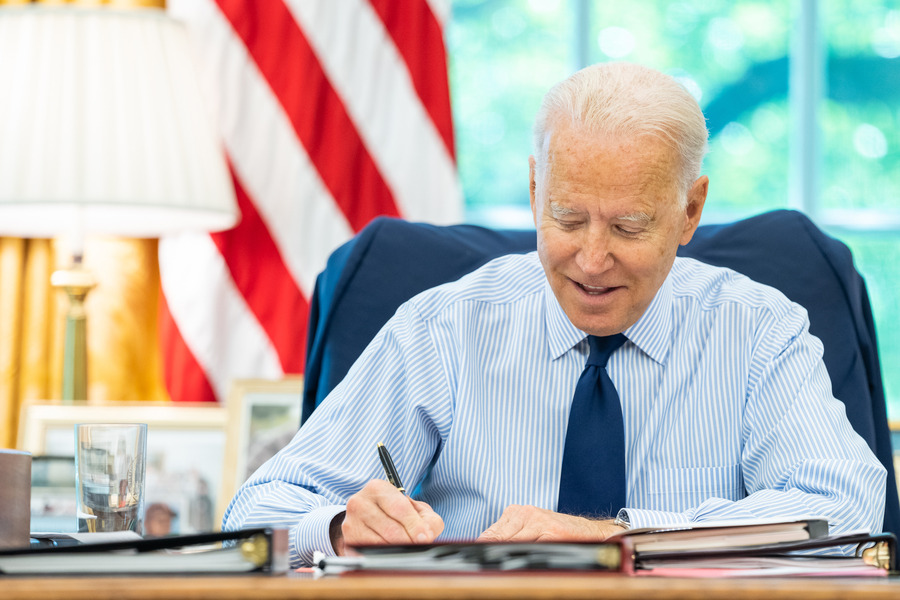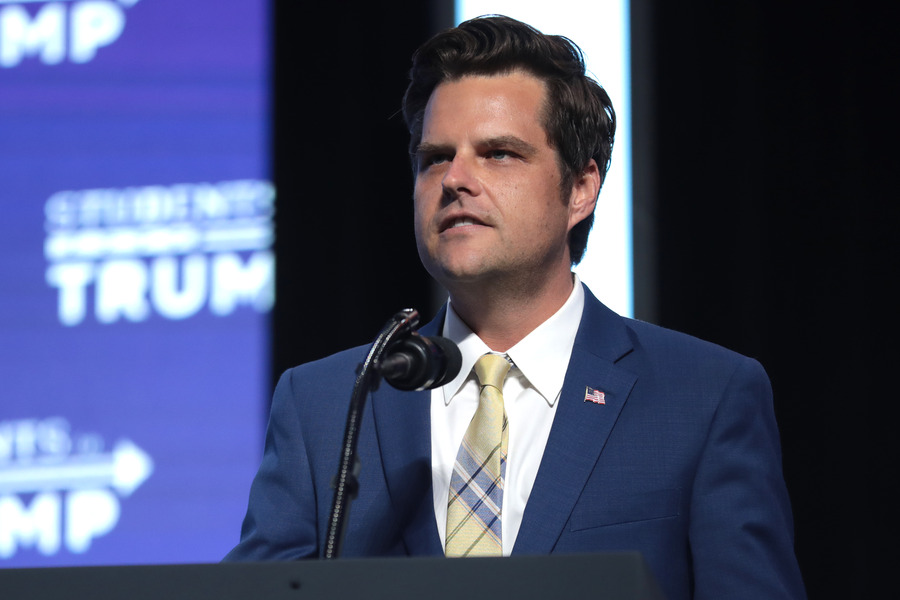Oral Argument Preview: <em>Zivotofsky v. Kerry</em>
On Monday, November 3, the Supreme Court will hear oral arguments in Zivotofsky v. Kerry, the long-awaited final act in a decade-plus-long saga surrounding the passport of an American boy born in Jerusalem.
Published by The Lawfare Institute
in Cooperation With

On Monday, November 3, the Supreme Court will hear oral arguments in Zivotofsky v. Kerry, the long-awaited final act in a decade-plus-long saga surrounding the passport of an American boy born in Jerusalem. The issue before the Court this time around (the Court decided a preliminary issue in 2012) is whether a federal statute directing the Secretary of State, upon request, to record “Israel” as the birthplace of an American citizen born in Jerusalem impermissibly interferes with the President’s power to recognize foreign nations. The broader import of Zivotofsky, as Jack noted when the Court granted certiorari, is that “the Court will need address the scope of the President’s exclusive power in a foreign relations context---something it has rarely (if ever) squarely done.” The resolution of Zivotofsky thus carries significant separation of powers implications. In preparation for oral argument, we preview the key arguments set out in the merits briefs.
First, however, a brief refresher on the facts. In 2002, Congress enacted the Foreign Relations Authorization Act, § 214(d) of which directs the State Department to “record the place of birth as Israel” in the passports of Americans born in Jerusalem, if they or their parents so request. Shortly after the enactment, American citizen Menachem B. Zivotofsky was born in Jerusalem, and the boy’s parents requested of the State Department that his birthplace be listed as Israel on his passport. When the State Department denied the request, Zivotofsky sued the U.S. government. Both the federal district court and federal appeals court held, in effect, that the case presented a nonjusticiable political question, but the Supreme Court disagreed. In Zivotofsky v. Clinton, 566 U.S. ___ (2012), the Court declared that judicial review of Zivotofsky’s claim was available, and that the constitutional question turned on whether the statute impermissibly intrudes upon the President’s exclusive recognition power under the Constitution. On remand, the D.C. Circuit held that the statute was such an unconstitutional incursion of the President’s power (here is Samantha Goldstein’s summary of that opinion). Zivotofsky petitioned for certiorari, and the Supreme Court granted, bringing us to the present.
We turn now to the merits briefs.
Petitioner sets forth four main arguments.
First, he argues that § 214(d) is mere passport legislation and thus “well within Congress’ power to regulate the issuance and content of United States passports” (Pet. Br. 17). In petitioner’s words, it is squarely within Congress’s authority to “regulate the issuance of passports,” and § 214(d) “[o]n its face” does no more than “address[] . . . how a place of birth is to be recorded on a passport” (Pet. Br.19). Consistent with its passport authority, Congress has passed numerous pieces of passport legislation since 1856.Petitioner also argues that the Jerusalem-Israel question bears “no meaningful difference” from the Taiwan-People’s Republic of China question, and notes that Congress resolved the latter question in 1994 by directing the Secretary of State to permit Taiwan-born U.S. citizens to list “Taiwan” rather than “China” as their birthplaces on their passports (Pet. Br. 21–22).
Petitioner also points to two cases in which the Supreme Court has “limited” the President’s power regarding passports to the authority conferred by statutes (Pet. Br. 22). In Zemel v. Rusk, 381 U.S. 1 (1965), and Haig v. Agee, 453 U.S. 280 (1981), the Court upheld the Executive’s acts of restricting or revoking citizen’s passports---but only, petitioner argues, because there was congressional statutory authorization, not because of any inherent presidential foreign policy power traceable to the Constitution (Pet. Br. 23). Petitioner then posits that Zemel and Haig imply that if Congress had not authorized but rather forbade the executive’s actions at issue in those cases, the Court would not have permitted the executive’s actions solely on the ground that Congress may not interfere with his conduct of foreign policy (Pet. Br. 24).
Finally, petitioner points out that Congress “frequently and routinely legislates, pursuant to explicit constitutional authority” in areas that affect foreign nations (Pet. Br. 26). Immigration is one such area; foreign trade (in particular, economic sanctions) is another (Pet. Br. 26–27).
Second, petitioner argues that the so-called “recognition power” does not rest exclusively in the President but rather is shared between the President and Congress (Pet. Br. 27–28). Here, petitioner relies on the original understanding of the Constitution; early Supreme Court cases and constitutional law treatises; and post-ratification practices.
With respect to the original understanding, petitioner argues that an originalist reading of the Constitution does not provide any basis for exclusive presidential recognition power. Petitioner stresses that executive recognition power can derive only from the “Receive Ambassadors Clause,” U.S. Const. Art. II, § 3, which declares that the President “shall receive Ambassadors and other public Ministers” (Pet. Br. 28). This clause prescribes a duty rather than bestows a power, petitioner suggests: at least, Alexander Hamilton seemed to think so in The Federalist No. 69, where he characterized the “Receive Ambassadors Clause” as “more a matter of dignity than authority” (Pet. Br. 28).
Turning next to nineteenth-century Supreme Court opinions and constitutional law treaties, petitioner argues that these sources support a theory of shared recognition power (Pet. Br. 30–34). For instance, United States v. Palmer, 16 U.S. 610 (1818), held that “the courts of the union must view . . . [a] newly constituted government as it is viewed by the legislative and executive departments of the government of the United States” (emphasis added by petitioner). And seminal nineteenth-century constitutional law treatises intimate that the legislature can override the executive’s recognition of a foreign nation (Pet. Br. 32–33).
Finally, petitioner sketches a post-ratification history of nine recognition instances, spanning from 1795 to 1898, illustrating how the President and Congress alternately — and at times jointly — exercised recognition power (Pet. Br. 34–57). This post-ratification history establishes that Congress “engaged in legislative recognition of foreign governments and participated in the recognition process,” thus undermining any claim that the President wields exclusive recognition authority (Pet. Br. 56).
Petitioner then distinguishes the case at bar from Supreme Court precedents containing dicta that describe the recognition power as belonging to the Executive (Pet. Br. 58). Those cases are inapposite, petitioner suggests, because they did not confront any disagreement between the executive and legislative branches as to recognition and therefore did not address whether recognition power is exclusive (Pet. Br. 58). Instead, those cases spoke only to whether a President’s recognition, absent any congressional dissent, is binding as to the judicial branch.
Importantly, petitioner addresses Justice Sutherland’s famed statement in United States v. Curtiss-Wright, 299 U.S. 304 (1936), that the President has “the very delicate plenary and exclusive power . . . as the sole organ of the federal government in the field of international relations” (Pet. Br. 60). That principle does not apply when, as here, the President is acting contrary to a congressional mandate (Pet. Br. 61). In a similar vein, petitioner underscores that under Justice Jackson’s framework in Youngstown Sheet & Tube Co. v. Sawyer, 343 U.S. 579 (1952), this case falls squarely within category three: “‘when the President takes measures incompatible with the expressed or implied will of Congress’” (Pet. Br. 62). Hence, presidential power it “‘at its lowest ebb’” (Pet. Br. 62).
Finally, petitioner contends that any impact § 214(d) might have on United States foreign policy is “negligible” (Pet. Br. 63). The State Department has “exaggerated” the impact of § 214(d), and the “practical effect” of enforcing the provision would bear on at most 50,000 passports (Pet. Br. 64–65).
Respondent’s argument proceeds in two steps. First, the Constitution grants the President exclusive power to recognize foreign states. Second, § 214(d) unconstitutionally interferes with that exclusive recognition power.
The government begins by arguing that there is, contrary to petitioner’s assertions, a clear constitutional basis for exclusive executive recognition power: the “Reception Clause” necessarily entails it. This is because the power to decide which ambassadors to receive “necessarily includes” the power to decide whether to establish diplomatic relations with a foreign entity, which in turn “entails determining” whether an entity should be treated as a state (Resp. Br. 14). For originalist support of this reading, respondent cites Founding-era letters of Thomas Jefferson and Alexander Hamilton showing agreement between the two Founders that receiving a foreign ambassador was tantamount to acknowledging the ambassador’s government as legitimate (Resp. Br. 14). Law of nations treatises and the practices of European nations during the same era were “fully consistent” with this view (Resp. Br. 15–16).
The constitutional basis for presidential recognition power does not reside solely in the “Reception Clause,” respondent asserts. Two other Article II provisions related to the President’s foreign-affairs powers provide key support. First, the original understanding of “Executive Power”---vested in the President via the “Vesting Clause,” U.S. Const. Art. II, § 1, Cl. 1---was that it encompassed “most foreign-affairs powers” (Resp. Br. 16–17). Second, it is “[p]articularly relevant to recognition” that the Constitution assigns the President the powers to nominate ambassadors and to make treaties, U.S. Const. Art. II, § 2, Cl. 2 (Resp. Br. 18). Like the power to receive ambassadors, the powers to nominate ambassadors and to make treaties necessarily entail recognition decisions (Resp. Br. 18).
Respondent rounds out discussion of the Article II bases for exclusive presidential recognition power by highlighting the position of the Washington Administration. Namely, respondent points to evidence that Washington Administration understood the Executive’s recognition authority to require an assessment whether recognition was appropriate, and also understood the Executive’s recognition authority to be exclusive of Congress (Resp. Br. 19–22).
Next, respondent turns to structural and functional aspects of the federal government that confirm the Executive’s exclusive recognition power. Regarding structural considerations, respondent points out that in contrast to the several Article II provisions mentioned above that confer recognition authority upon the Executive, no Article I provisions (and thus no enumerated powers) do the same with respect to Congress (Resp. Br. 22). As for functional considerations, respondent argues that “only the Executive has the comprehensive understanding of the United States’ contemporaneous foreign-relations objectives that is necessary to decide whether---and when---recognition will advance the United States’ interest” (Resp. Br. 23).
Next, respondent paints a very different picture of the post-ratification historical practice from the one petitioner offers. Since 1793 and continuing to the present, the Executive has “routinely” made “hundreds of unilateral recognition decisions” (Resp. Br. 27). While acknowledging the “four instances” in which petitioner contends Congress exercised the recognition decisions, respondent makes clear that Congress in those instances only acted consistently with the President’s recognition determinations (Resp. Br. 36–39).
Finally, respondent points to a bevy of statements by individual Justices and in Supreme Court opinions speaking to the Executive’s sole authority to make recognition decisions (Resp. Br. 39–42). The few opinions petitioner cites as support for the proposition that Congress and the Executive share recognition power are inapposite, respondent contends. Either they involved territories rather than foreign governments, the former of which Congress has constitutional authority, or they dealt with the interpretation of a statute, in which case the Court would have considered congressional intent relevant (Resp. Br. 41–42).
Respondent’s argument that § 214(d) is unconstitutional encroachment highlights the unique problem Jerusalem presents to United States foreign policy. “Since Israel’s founding, every President has adhered to the position that the status of Jerusalem should not be unilaterally determined by any party,” and § 214(d) would require Executive to reverse that position by presenting, in “Janus-like” manner, conflicting positions to foreign sovereigns (Resp. Br. 42–43).
As a preliminary matter, however, respondent establishes a distinction between the passport as an “instrument of diplomacy,” over which the President has constitutional authority, and the passport as a mere “travel control document,” over which Congress has constitutional authority (Resp. Br. 43). Relying on Supreme Court precedent and historical practice, respondent makes the case that insofar as passport content relates to diplomatic affairs, that content is exclusively the province of the Executive (Resp. Br. 44–45). It flows from separation-of-powers principles that any constitutional authority Congress possesses to regulate passports is limited by that exclusive Executive authority (Resp. Br. 45–46). Respondent notes that the passport legislation petitioner cites by and large does not touch the diplomatic aspects of passports, and in that sense, § 214(d) “radically . . . departs” from traditional passport legislation (Resp. Br. 46).
Respondent proceeds to explain how § 214(d) unconstitutionally impinges on the Executive’s authority. First, place-of-birth designations on passports implement recognition policy (Resp. Br. 48–51). Here, respondent takes issue with petitioner’s characterization of the Jerusalem-Israel question as bearing “no meaningful difference” from the Taiwan-People’s Republic of China question (Pet. Br. 21). Whereas listing “Taiwan” rather than “China” is a mere “geographic description,” the accuracy of which does not depend on whether Taiwan is a sovereign entity distinct from the People’s Republic of China, listing “Jerusalem” as “Israel” would amount to an assertion as to Israeli sovereignty over Jerusalem (Resp. Br. 52). Other parts of § 214, such as the title (“United States Policy With Respect to Jerusalem as the Capital of Israel”), even if not determinative of constitutionality, would further drive home the message that the United States in complying with a certain subsection of § 214 is reversing its policy with respect to Jerusalem (Resp. Br. 53). Such a policy reversal would have “particularly severe” consequences, given the “extraordinarily sensitive context” of the Jerusalem issue (Resp. Br. 54).
Finally, respondent disputes the category three designation of this case, referring to Justice Jackson’s separation-of-powers framework in Youngstown. The President is not “‘tak[ing] measures incompatible with the expressed or implied will of Congress,’” respondent urges, because Congress’s will here unconstitutionally impinges upon the President’s exclusive authority (Pet. Br. 58).
Jodie C. Liu formerly researched national security issues at the Brookings Institution as a Ford Foundation Law School Fellow and has worked at the Open Society Foundations in Budapest, Hungary. She graduated magna cum laude from Harvard Law School in 2015 and summa cum laude from Columbia College in 2012, with honors in economics.





